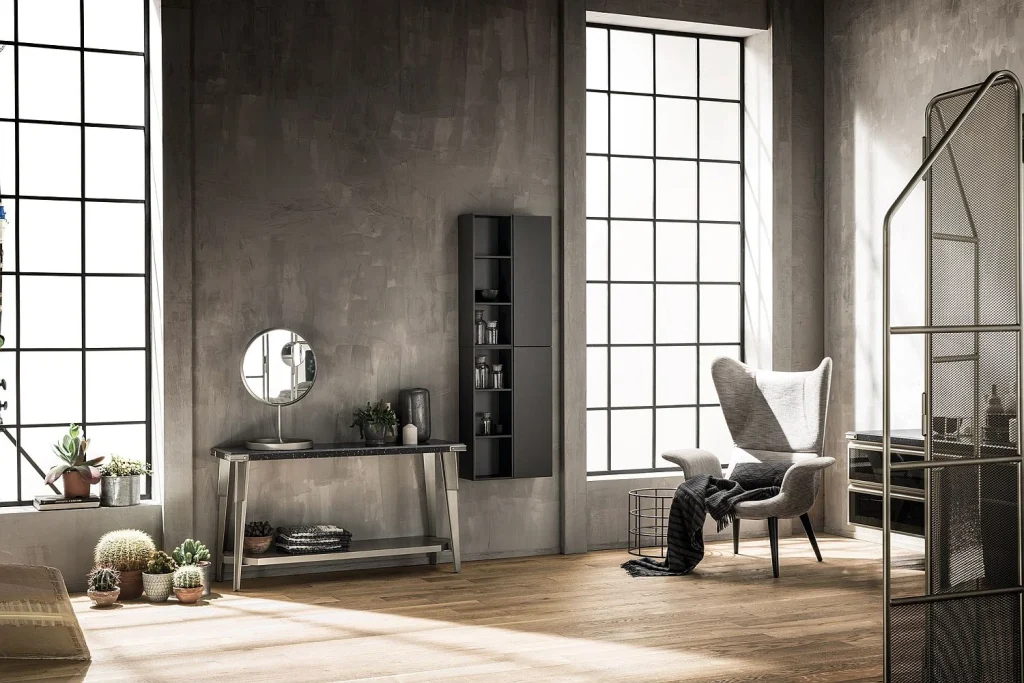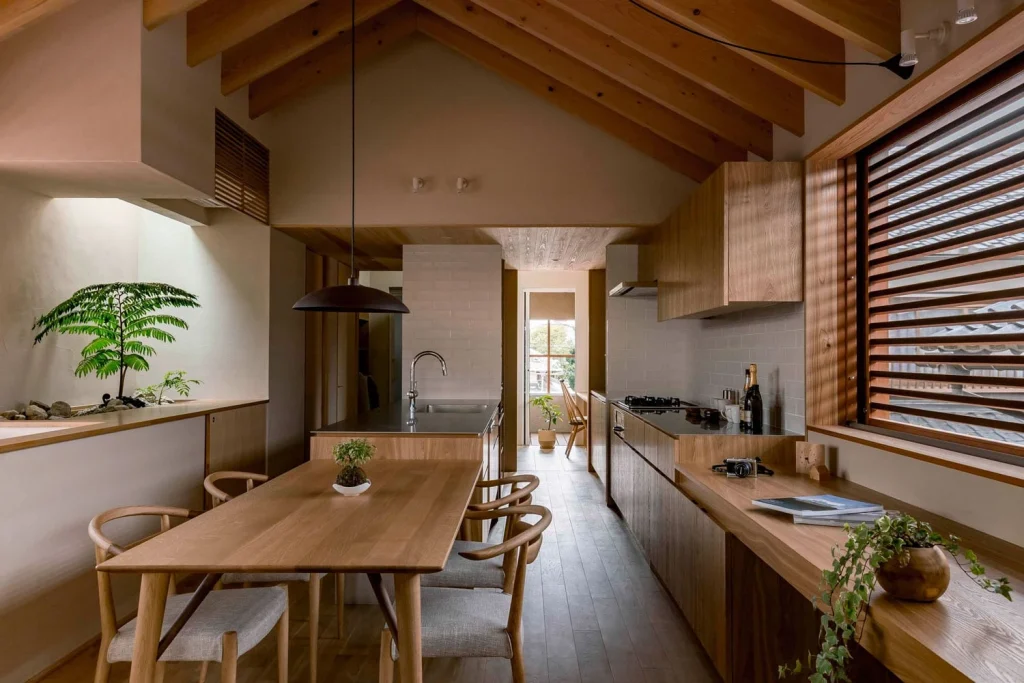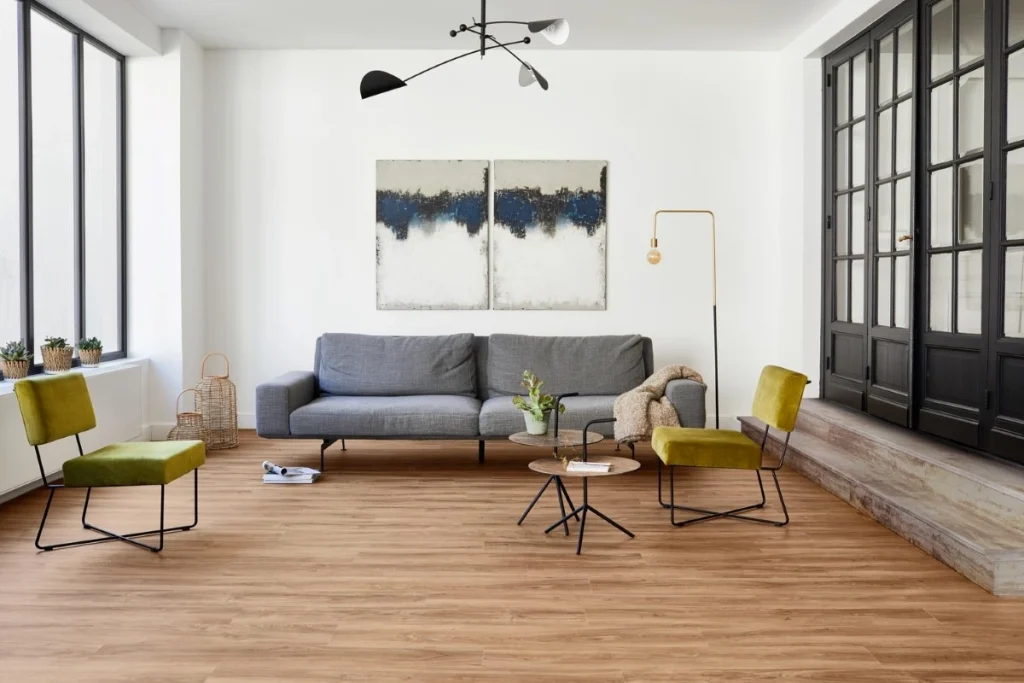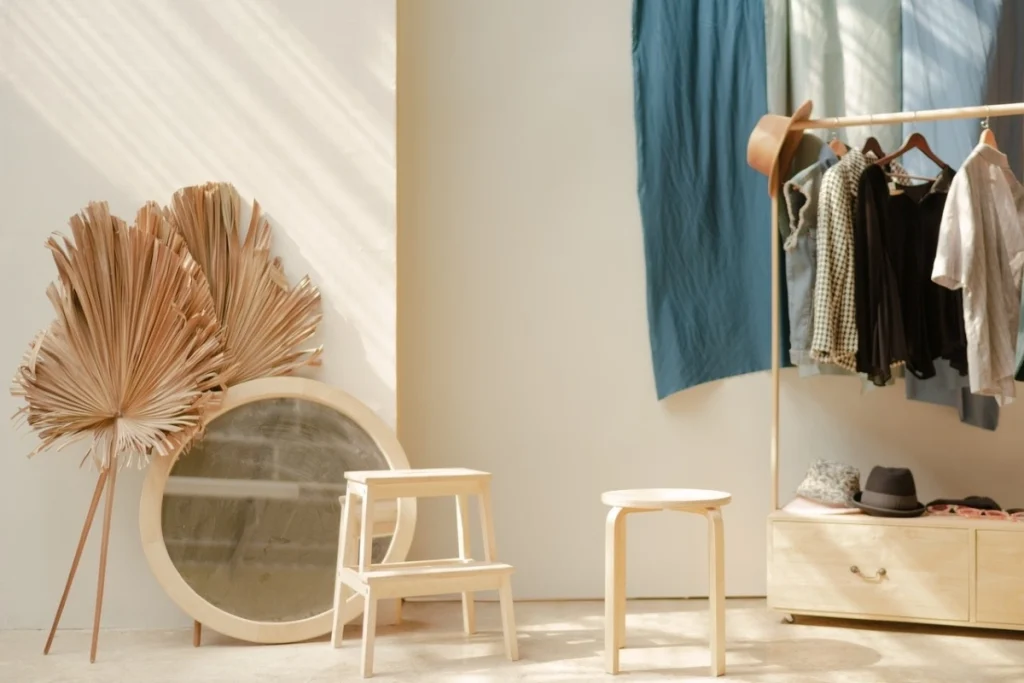Minimalist interior design In General
Minimalism refers to having all things that add value and removing the rest that is not necessary. We can see minimalism everywhere in modern life from fashion, art, lifestyle, and especially in interior design. Minimalist interiors designs usually focus on simplicity, light, open space, clean lines as well as functional furniture and removing unnecessary things, clutter, and some of the walls.
Common styles of minimalist interior design
According to a study by Rentcafe in 2022, around 59% of survey participants said that they love minimal interior design. It looks like the popularity of this style stands still in the publish time of this article (2024). I strongly believe that minimalism will keep its popularity rate at the moment or even sharply increase in the future. Therefore, in this article, I would like to discuss 4 common styles of minimalism including Industrial, Japanese, Scandinavian, and Urban minimalism styles, and hope that you can choose the right style for your home.
Industrial Minimalist style

Overview of Industrial Minimalist Design
The industrial minimalist style was born in 1950s America, it was inspired by factories and industrial buildings with brick, pipe, metal, and concrete. This style is outstanding with open space with large windows and natural light. Furthermore, another element that makes the industrial style easy to recognize with other ones is color. The common colors that are used in this style are white, black, gray, and orange from bricks. However, black and gray sometimes evoke the feeling of darkness in your house.
Read more: Grey and white kitchen ideas
Who suits this style?
This minimalist style is suitable with people who love neutral colors or men with practical and calm characters. If you love simplicity and power in your lifestyle, you should consider this style because its dominant colors usually are black and gray which symbolize power and domination.
Advantage and disadvantage
Before you decide to choose the industrial minimalist style for your home. Let’s have a look at the pros and cons of this style. It will help you make the decision more carefully and avoid regrets in the future.
Pros
- Durability: This design has long durability because components for building the space are from factories, warehouses, industrial buildings
- Unique aesthetic: It will bring industrial aesthetics into your house and will be different from normal houses, so your house will be more attractive to visitors.
Cons
- Cold atmosphere: Elements and colors of this style will evoke feelings of sadness, cold, and loneliness.
- Expensive Cost: Almost all components of this style are from industrial properties. Sometimes, you can not easily buy your desired elements from normal furniture stores because some components are not popular.
- Maintenance work: this minimalist style usually creates a huge problem in maintenance and cleaning because the surface of materials such as concrete and brick is lumpy as well as steel pipes and sticks are easily rusty.
Tips and ideas for the Industrial Minimalist design
- Visit industrial properties: This design comes from industrial properties. So, there is an effective way to illuminate your ideas is to visit some industrial warehouses or factories. If you don’t have time or permission for going into a industrial properties, you can try an other method by having a look from photos and videos from the Internet
- Consider industrial elements: There is a basic thing you have to do for creating an industrial space, that is to leave structural elements such as pipe, brick, beams, pipes, and ductwork exposed.
- Choose the right colors: For the color theme, let’s consider industrial colors such as gray, brick, or black
- Improve natural light: You should ensure your house will have some large windows for natural light because those colors above will make your home look darker.
Japanese Minimalist style

Overview of Japanese minimalist design
Japanese minimalist style is inspired by Japanese culture and people who love neatness and cleanness. The minimalist style from the Land of the Rising Sun will bring a calm and cozy atmosphere with natural light. This style is also popular with some indoor trees, bonsai, and wood furniture.
Who suits this style?
The Japanese style is really a good choice for those who love wood furniture and planting trees. Or people who have a passion for Japanese culture and lifestyle. If you are an urban resident and need some space to escape from your busy life in cities, this style is also a recommended option.
Advantages and disadvantages
Like other styles, the Japanese minimalist style also has pros and cons that you need to consider before applying to your home.
Pros
- Enhanced Focus: The Japanese minimalist style will create a calm and quiet atmosphere in your house, which will help to improve your focus capability.
- Connection to Nature: the style will create a connection to nature with some indoor trees and bonsais in its design
- Timeless design: the love for this style in modern life, even though it was born around the 12th century, is a demonstration of its timelessness.
Cons
- Cost: The Japanese minimalist style usually comes with a high cost. Because you have to pay a lot of money if you want to have high-quality wood furniture and beautiful bonsai.
- Maintenance Challenges: In this style, discipline is a big challenge in maintenance. Homeowners have to be disciplined in house cleaning to protect the space from clutter
- Issue relating to culture: Sometimes, Japanese culture is placed in the Japanese minimalist design. Thus, you should understand Japanese culture, if you don’t want to accidentally do something disrespectful to Japanese culture.
Tips and ideas for a design of Japanese minimalist style
- Study Japanese culture: As I discussed above, you should spend your time learning about Japan. It not only helps you avoid problems relating to Japanese culture but also provides you with some effective ideas for your minimalist design.
- Learn about indoor trees: You also need to study indoor trees that the Japanese usually plant in their home and learn how to take care of them. Especially with bonsai, this type of tree is really expensive, so it has to receive good attention if you don’t want to lose a lot of money.
- Set up the right lighting: Japanese minimalist furniture is usually made of wood. Therefore, your home will look warmer and cozier if there is a combination of natural light or yellow light with the furniture.


